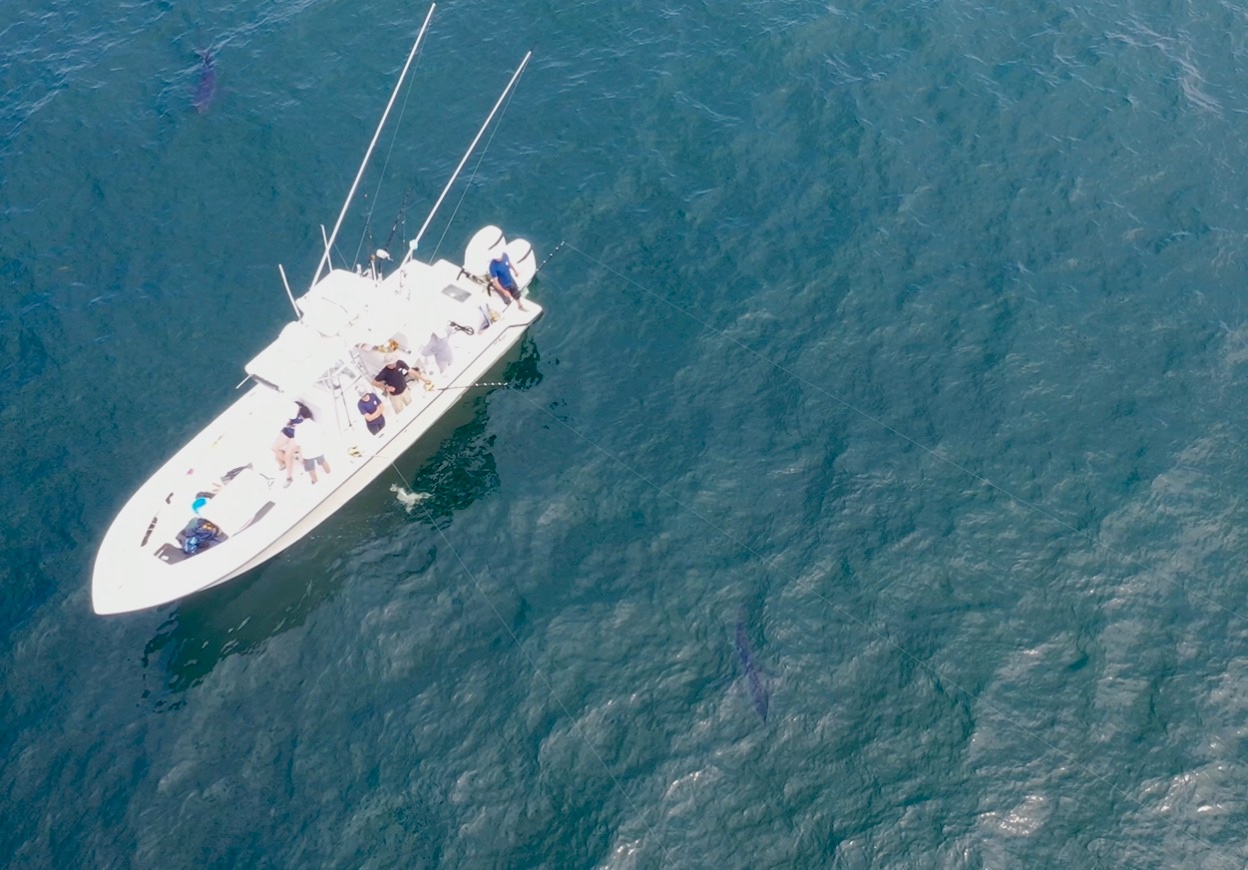
Week 4
On Thursday, we drove down to Saquish Beach in Duxbury to continue mapping seagrass beds. This research is in conjunction with the EPA and MIT, as part of an ongoing project through NOAA’s SeaGrants program. When we got down to the beach, we split up into groups. Researchers sent one group to deploy shallow water BRUVs (baited remote underwater video). The BRUVs we are using for this work are essentially PVC pipes with a weight, a GoPro camera, and attached bait—low cost, and high reward for our science team! Marine creatures are attracted to this device because of the lure. The footage captured on the GoPro will then give us an idea of what’s in the area. This stayed out in the ocean for about an hour and a half before we retrieved it. Unfortunately, one of the two BRUVs was too hard to retrieve during high tide. We made the safe decision to come back the next day at low tide.
While we waited, another group took an eDNA sample in the water—a.k.a an “environmental” DNA sample. The sample also helps give us an idea of what species are in the area, from very small life like plankton and crustaceans to very large life like fish, marine mammals, or even sharks.
On Friday, we went to a different location in Duxbury called Howlands Landing. Again, we mapped the seagrass beds in this location, took an eDNA sample, and dropped off a BRUV. The substrate was very muddy at this location, making working in the field much more challenging—if you stood still, you would sink! Everyone worked together, though, and we completed the tasks quickly.
We even saw two horseshoe crabs, which impressed the interns from out of state more than the in-state ones. Half of the team went to retrieve the BRUV from Thursday, and half went back to the lab to process the eDNA samples. A complete and successful week!

Week 5
We started week five off strong with a 5 am wake-up. This week we pushed off from Harwich, Massachusetts, with Captain Nate. Our team on the boat was Christine de Silva, Wells Howe, Meghan Howe, Michael Nessralla, and Grace Coughlin. It was a little chilly out on the water, around 65° F but very flat. As usual, the first stop is fishing for mackerel to use as live bait. After we caught enough mackerel, we headed to Crab Ledge to set up for the day. Instead of a bait bucket, we strung some bluefish along the side of the boat to create a slick and used the mackerel as live bait.
We quickly saw a fin from a blue shark. However, the shark evaded our best efforts to keep it on the line. Sharks avoiding us became a bit of a theme for the day. Still, we got to spaghetti tag (an identification tag, which has BTW’s contact information on it for anyone who recaptures the shark), and completed workups from 2 blue sharks for the day. We saw around 4-10 blue sharks, but some of them could have been the same sharks coming back for a free meal.
We called it a day on the boat, making it back to the docks before dark. However, this was not the end of the day on land. Christine sat in her car, carefully centrifuging shark blood down to plasma. This way, the plasma doesn’t have a chance to solidify before getting it back to the lab. Grace drove the samples the hour and a half back to Braintree lab from the dock on the Cape and stored them in our -80° C freezer. Our day ended around 10:30 PM. The interesting thing about field science is that you don’t always have regular hours. Sometimes that means being up 5 am-10:30 pm.
The rest of the week was mainly research and reorganization in the lab for the new and old equipment. The ocean is harsh on our scientific gear, so it is essential to rinse equipment carefully. Even so, wear and tear are bound to happen. Hence, repairs and maintenance are a regular occurrence!
Edited by Nathan Perisic.










